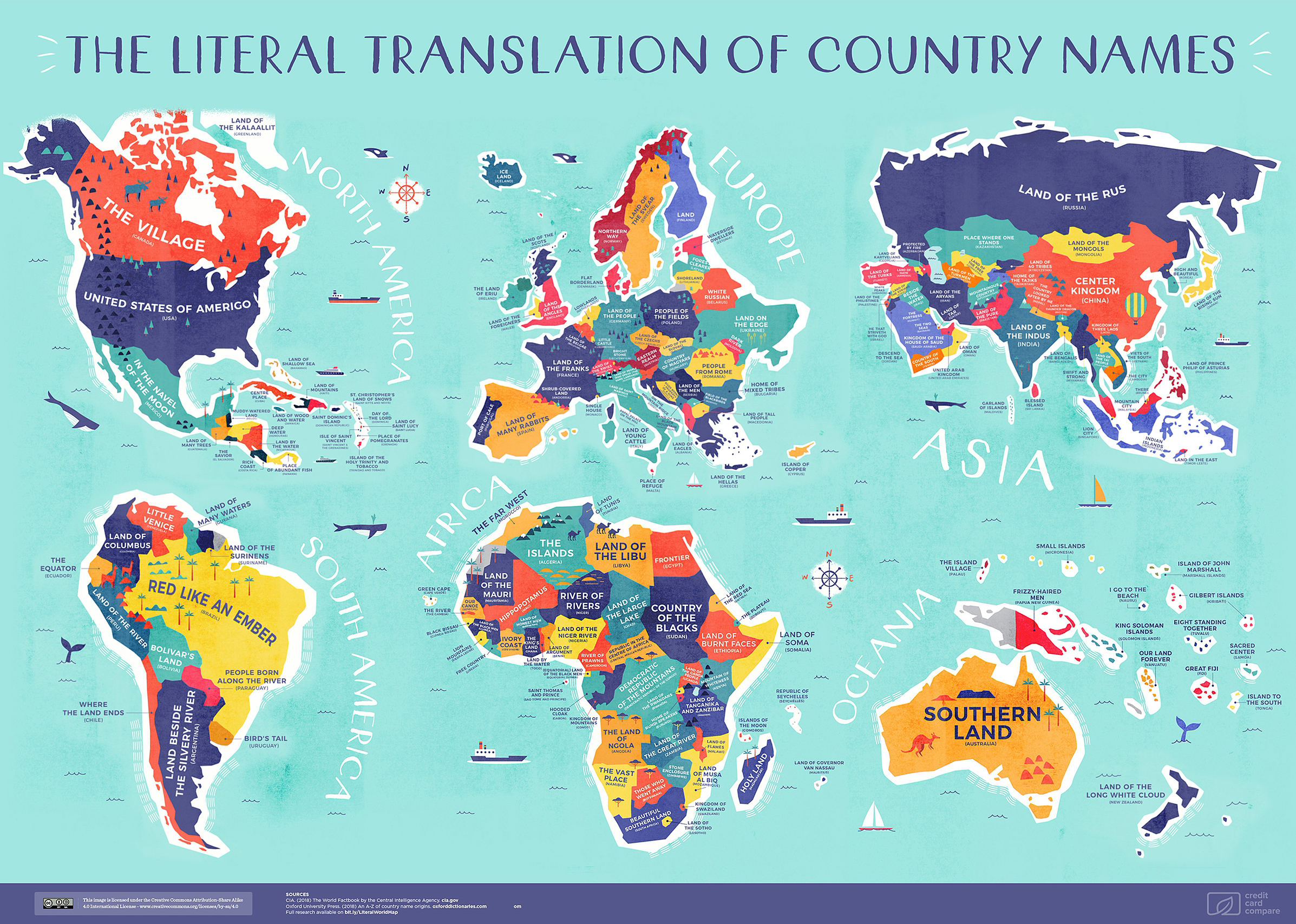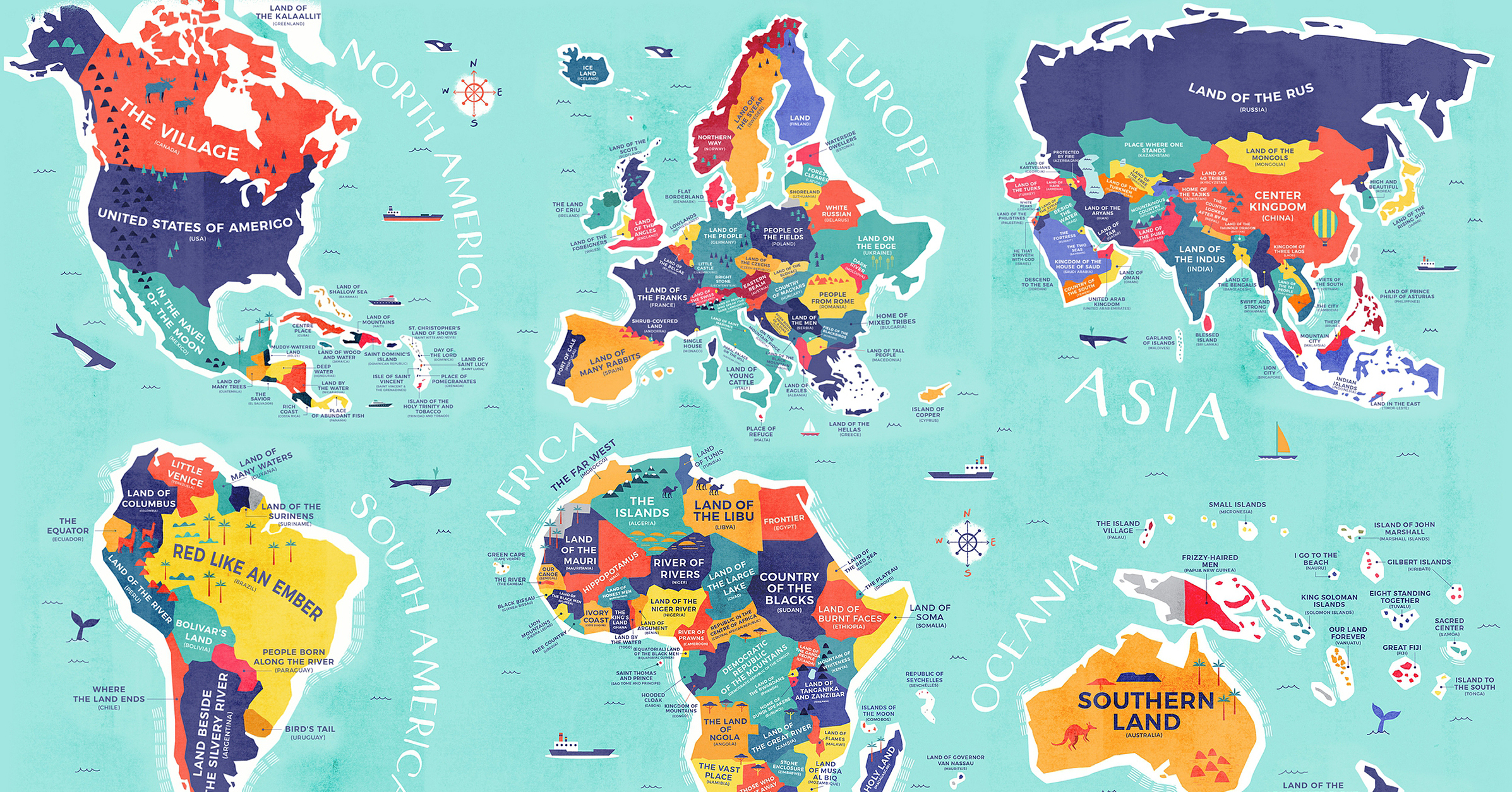Misc
Mapped: The Literal Translation of Every Country’s Name
View the full-size version of the infographic
Mapped: The Literal Translation of Every Country’s Name
View the full-size version of the infographic by clicking here
These days, planes, trains, and automobiles can deliver us to any destination we can name. But how often can we say we know the origins of those names?
Today’s map comes to us courtesy of Credit Card Compare, and it visualizes the literal translations of every country’s name, arranged by continent. Of course, naming conventions are always layered and open to interpretation — especially when they’ve gone through multiple levels of translation — but it’s still an interesting exercise to trace where they are thought to come from.
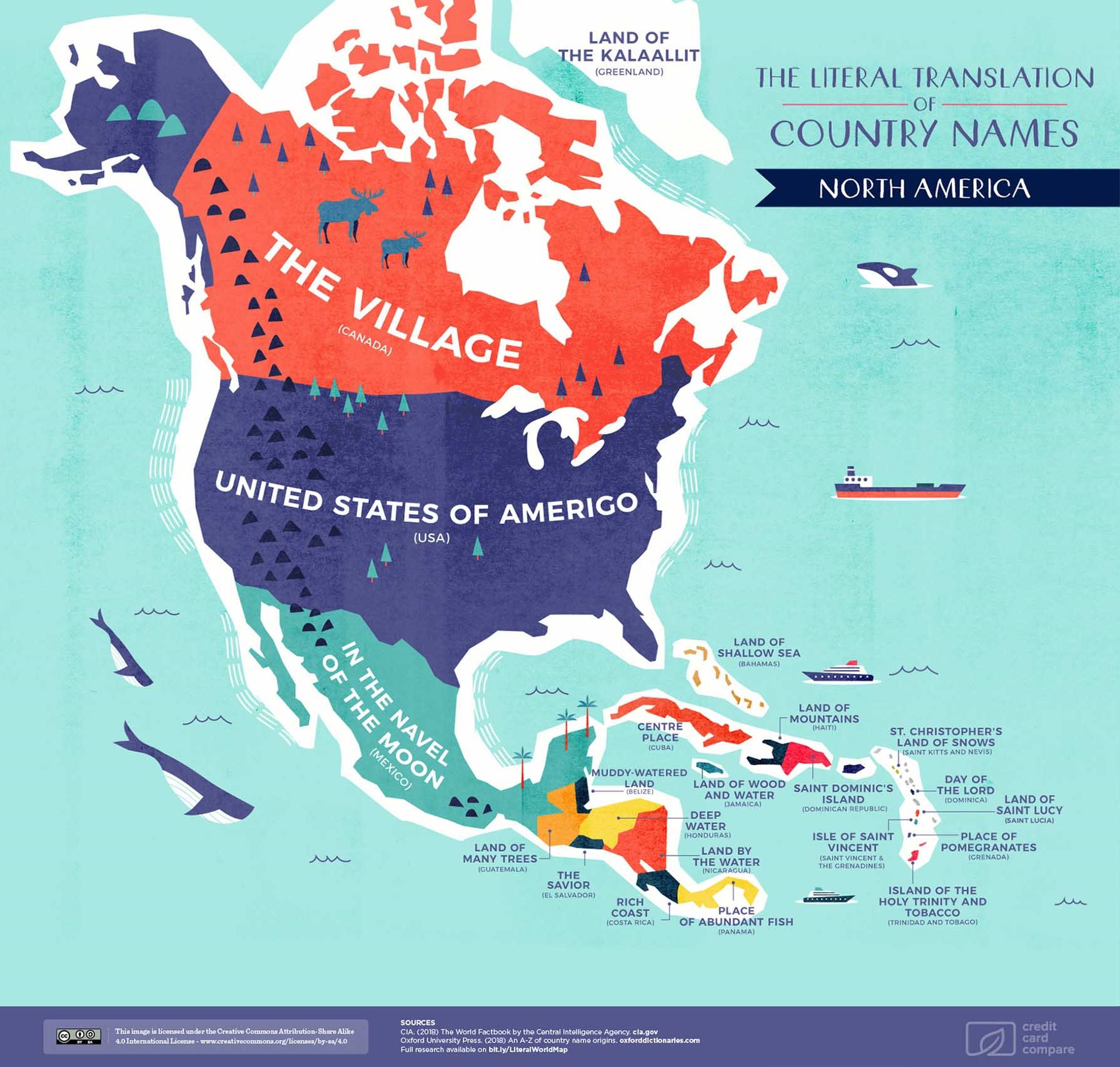
North America
Starting with the Great White North, Canada’s name is derived from the Indigenous Huron people. Kanata means village, or settlement, in the Iroquoian language. Meanwhile, The United States of America was named in honor of the Italian explorer Amerigo Vespucci. Vespucci is credited with correcting Columbus’ error, in which the latter mistook the New World for the East Indies.
Finally, Mexico comes from the simplified Spanish translation for the Aztec capital, Metztlixihtlico, which is said to mean “place at the center of the moon”. The word is a blend of mētztli for ‘moon’, xictli for ‘navel’ or ‘centre’, and the suffix -co for ‘place’.
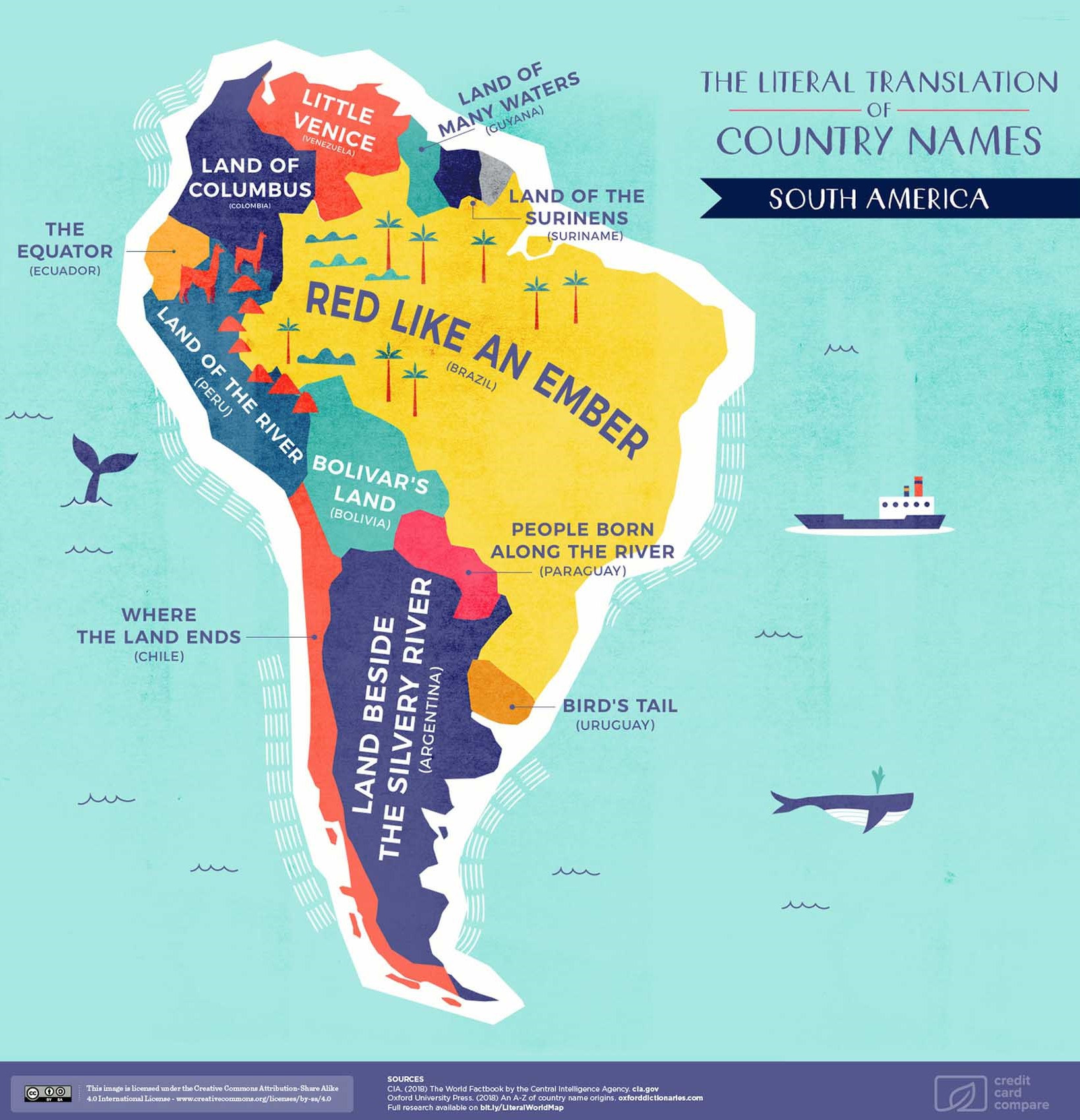
South America
Brazil’s name is actually shortened from Terra do Brasil (land of Brazil). The brazilwood tree, or pau-brasil, was valued highly in the early 16th century. It was used to produce red dyes for the European textile industry — hence the “red like an ember” moniker.
Uruguay has a couple of meanings attached to it, the first being “Bird’s Tail” in reference to the uru, a type of quail that lived by the river. Another association is the uruguä, a species of mussel, for which the country is named “River of Shellfish”. It’s interesting to note the relationship to water and rivers, which is reflected in the similarly-themed naming history across the continent.
Venezuela is named for its resemblance to the Italian city of Venice, thus gaining the title of “Little Venice”. Another area also named after European cities? Colombia, which was originally named “New Granada” in a hat tip to the capital of the Spanish province.
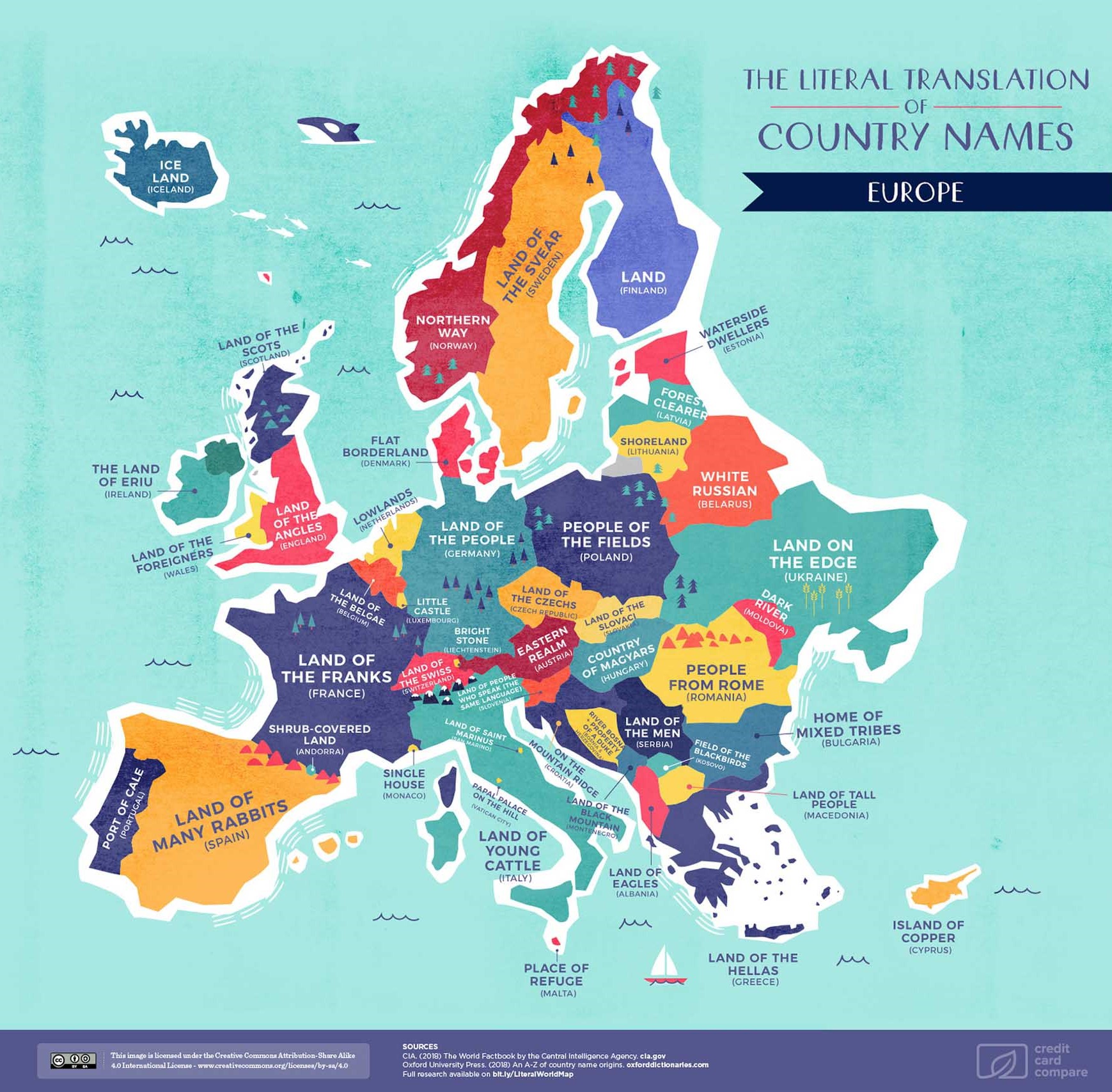
Europe
The “Land of the Franks”, France, gets its namesake from the Latin word francia. This dates back even further to the Old German word franka, meaning brave, or fierce. There’s also a political angle to the name: King Louis V famously proclaimed that “France signifies freedom”.
The exact origin for Germany is unknown, possibly because it was composed of various tribes and states before 1871. It’s known as Deutschland (for “of the people”) in German, Alemania in Spanish, Niemcy in Polish, and Saksa in Finnish. Another theory ties it with the Celtic word ‘gair’ for neighbor.
By the Mediterranean, the boot-shaped country of Italy gets its name from the symbol of the Southern Italic Vitali tribe: the bull. The name is connected to the Latin vitulus for ‘calf’ or ‘sons of the bull’. Another interpretation is the phrase diovi-telia, which translates to “land of the light”.
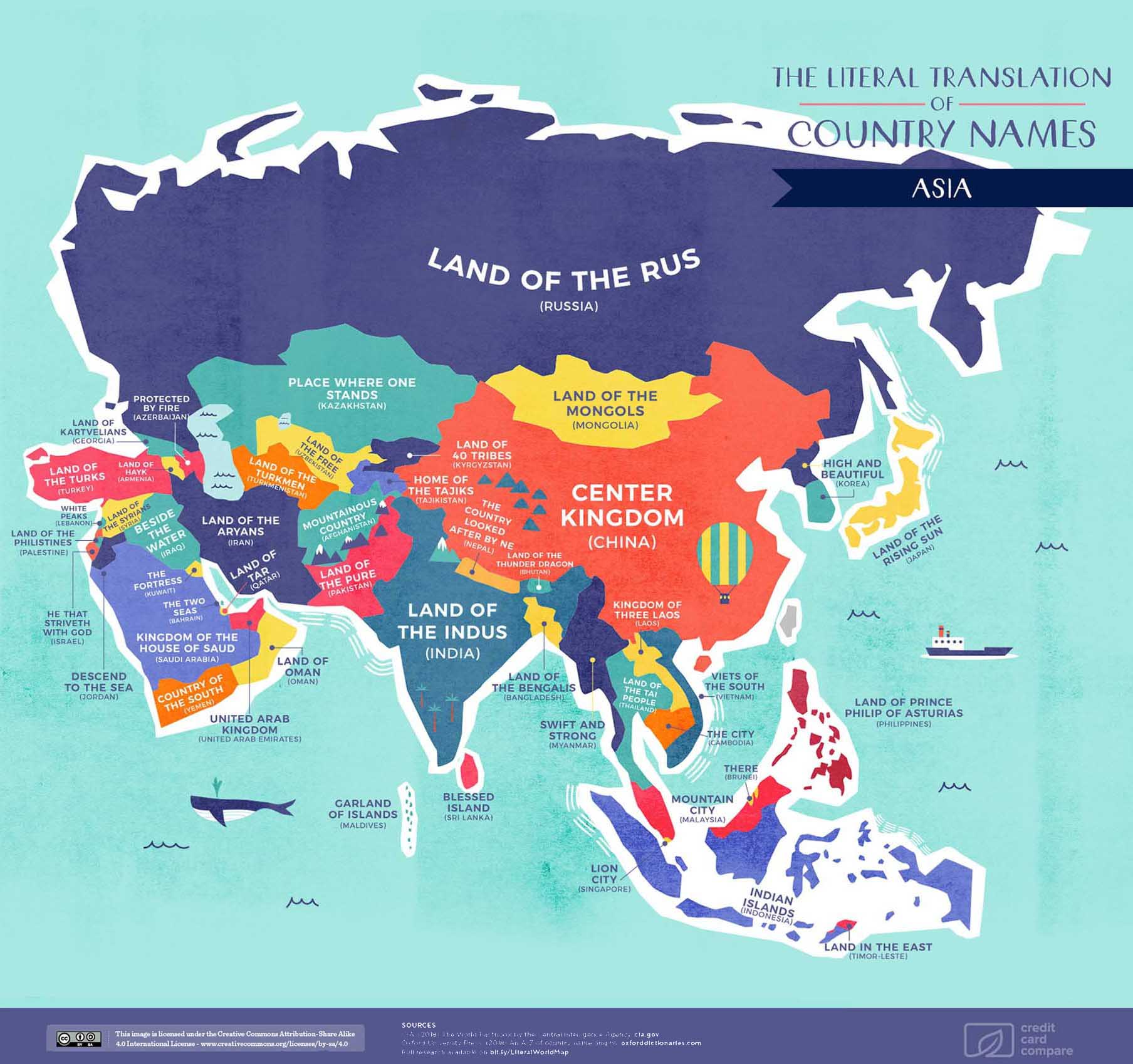
Asia
China’s English name comes from the Qin dynasty, the first unified and multinational state in Chinese history. Although the dynasty only existed between 221-207 BC, it had a profound and lasting influence on the country. A fascinating tidbit is that China’s name in fact borrows from the Persian language, and even Sanskrit.
India’s name comes from Greek, but also the Sanskrit Síndhu, where both refer to the Indus River. Bharat is another official and historically significant name for the Republic of India, and Hindustan is an alternative name for the region, but its use depends on context and language.
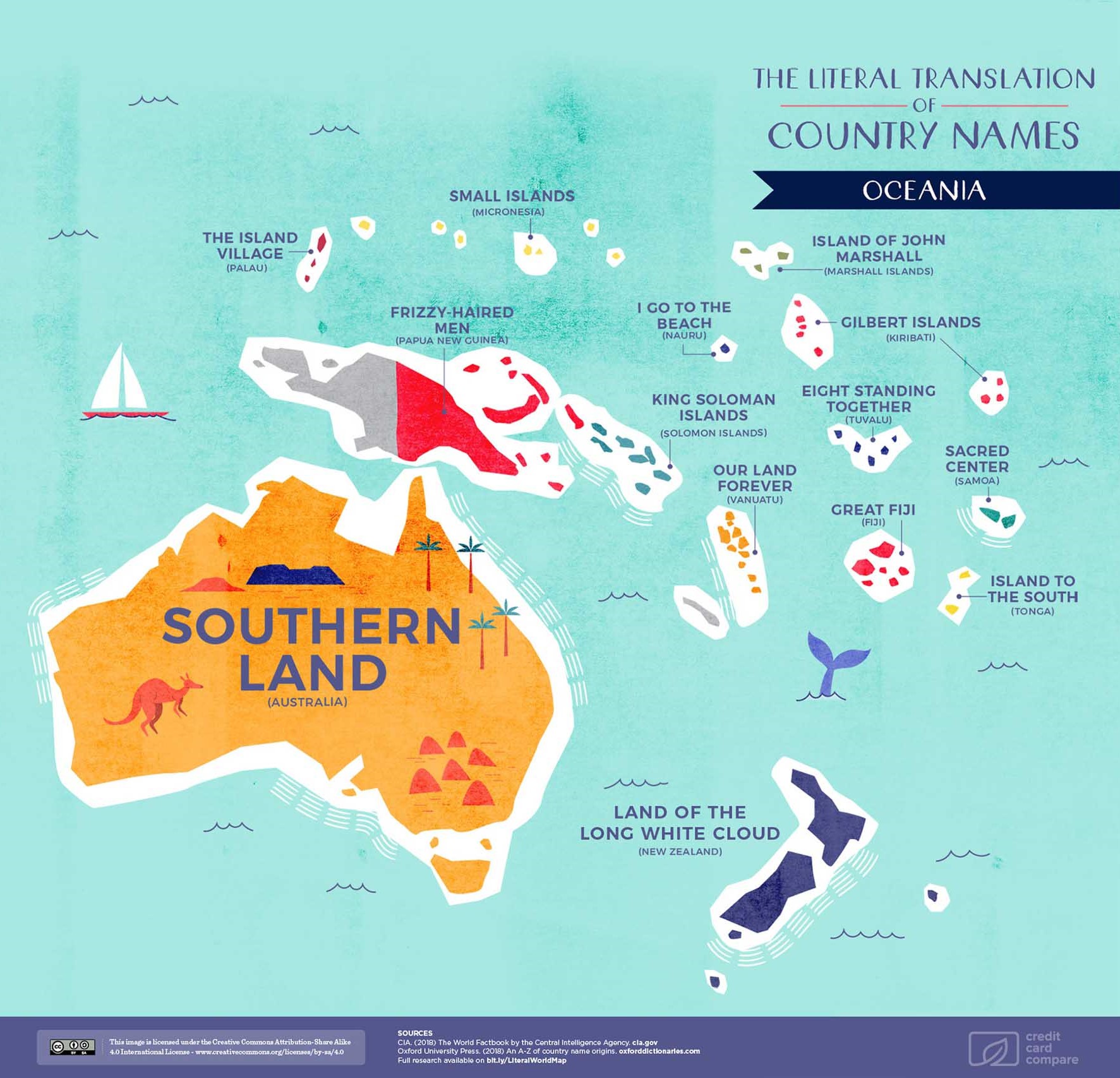
Oceania
The Land Down Under of Australia is fairly geographical in its name, drawn from the Latin australis for “southern”. The explorer Matthew Flinders popularized the name as we know it in 1804, and “Australia” replaced “New Holland” as the official continent.
The Māori name for New Zealand is Aotearoa, which is most commonly defined as “the long white cloud” — a reference to early Polynesian navigators discovering the country by relying on cloud formations.
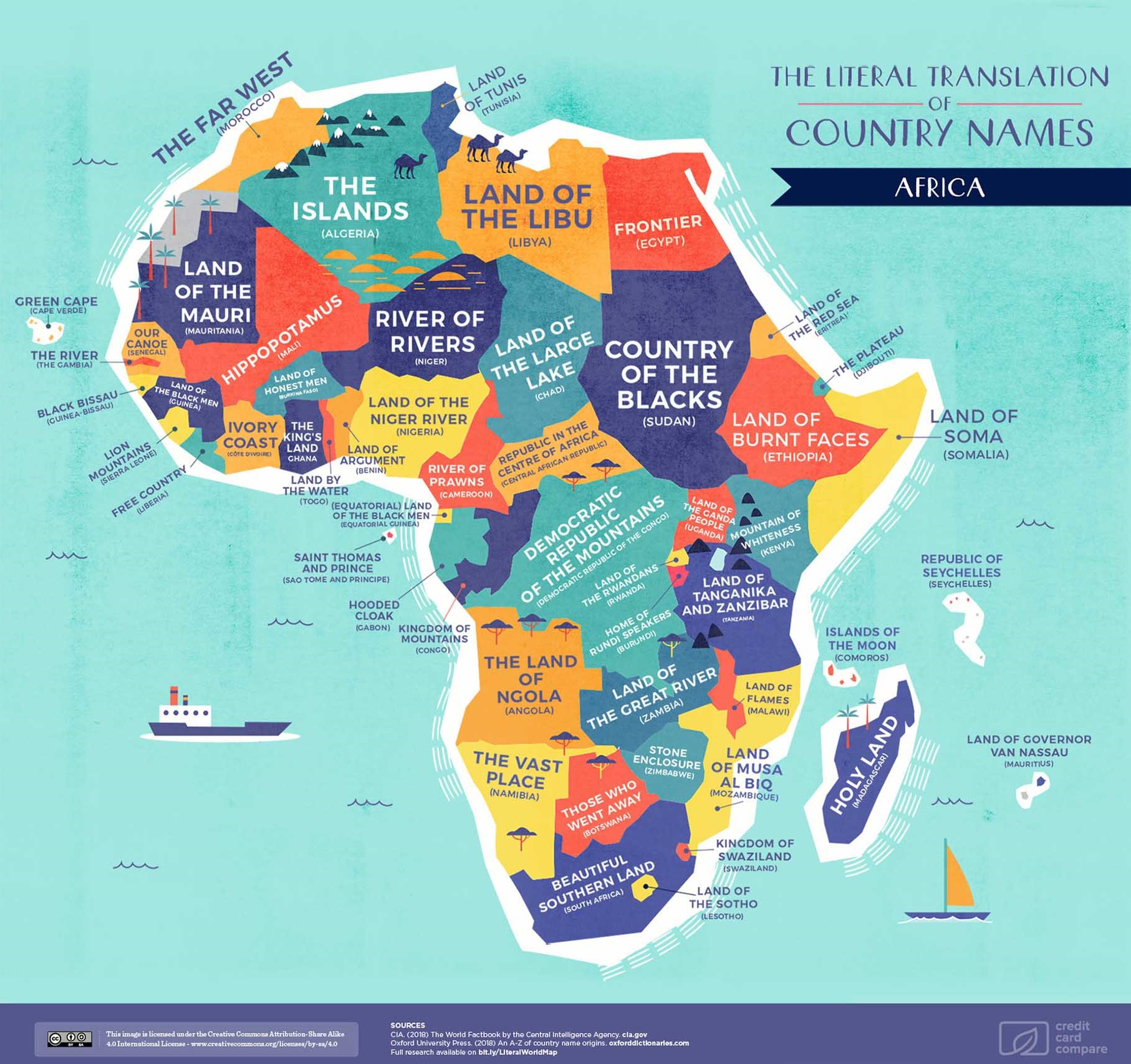
Africa
The name Egypt comes from the Ancient Greek Aiguptos and Latin Ægyptus, and is also derived from hūt-kā-ptah (Temple of the Soul of Ptah). The ancient Egyptian name for the country was km.t (pronounced “kemet”), meaning “black land” likely for the fertile soils of the Nile valley. Today, Egypt’s official name is Jumhūrīyat Miṣr al-ʻArabīyah, or “Arab Republic of Egypt”.
South Africa is aptly named for its geographical location. Interestingly, however, the country has different names in the country’s 11 official languages, including English, Afrikaans, the Venda language, the Tsonga language, and the Nguni and Sotho languages.
What rich histories can be uncovered from your country’s name?
Note: Where some of the country names on the individual maps vary from the translations, please consult the original research document which include the English translations and explanations behind the etymology.
Misc
Visualizing the Most Common Pets in the U.S.
Lions, tigers, and bears, oh my!—these animals do not feature on this list of popular American household pets.

Visualizing The Most Common Pets in the U.S.
This was originally posted on our Voronoi app. Download the app for free on iOS or Android and discover incredible data-driven charts from a variety of trusted sources.
In this graphic, we visualized the most common American household pets, based on 2023-2024 data from the American Pet Products Association (accessed via Forbes Advisor).
Figures represent the number of households that own each pet type, rather than the actual number of each animal. The “small animal” category includes hamsters, gerbils, rabbits, guinea pigs, chinchillas, mice, rats, and ferrets.
What is the Most Popular American Household Pet?
Based on this data, dogs—one of the first domesticated animals—are the most common pets in the United States. In fact, around 65 million households own a dog, and spend an average of $900 a year on their care.
| Rank | Species | Households |
|---|---|---|
| 1 | 🐶 Dog | 65M |
| 2 | 🐱 Cat | 47M |
| 3 | 🐟 Freshwater Fish | 11M |
| 4 | 🐰 Small Animals | 7M |
| 5 | 🐦 Bird | 6M |
| 6 | 🦎 Reptile | 6M |
| 7 | 🐴 Horse | 2M |
| 8 | 🐠 Saltwater Fish | 2M |
Note: Households can own multiple pets, and are counted for all relevant categories.
Cats rank second, at 47 million households, and these smaller felines are a little less expensive to own at $700/year according to Forbes estimates.
But aside from these two juggernauts, there are plenty of other common pet types found in households across the country.
Freshwater fish can be found in 11 million households, along with small animals—rabbits, hamsters, guinea pigs—in 7 million. Meanwhile, nearly 6 million homes have birds or reptiles.
Pet Ownership is on the Rise in America
Forbes found that 66% of all American households (numbering 87 million) own at least one pet, up from 56% in 1988. One third of these (29 million) own multiple pets.
A combination of factors is driving this increase: rising incomes, delayed childbirth, and of course the impact of the pandemic which nearly cleared out animal shelters across the globe.
America’s loneliness epidemic may also be a factor. Fledgling research has shown that single-individual households with pets recorded lower rates of loneliness during the pandemic than those without a pet.
-

 Sports1 week ago
Sports1 week agoThe Highest Earning Athletes in Seven Professional Sports
-

 Countries2 weeks ago
Countries2 weeks agoPopulation Projections: The World’s 6 Largest Countries in 2075
-

 Markets2 weeks ago
Markets2 weeks agoThe Top 10 States by Real GDP Growth in 2023
-

 Demographics2 weeks ago
Demographics2 weeks agoThe Smallest Gender Wage Gaps in OECD Countries
-

 United States2 weeks ago
United States2 weeks agoWhere U.S. Inflation Hit the Hardest in March 2024
-

 Green2 weeks ago
Green2 weeks agoTop Countries By Forest Growth Since 2001
-

 United States2 weeks ago
United States2 weeks agoRanked: The Largest U.S. Corporations by Number of Employees
-

 Maps2 weeks ago
Maps2 weeks agoThe Largest Earthquakes in the New York Area (1970-2024)

